

Conjunctions are when two bodies in the sky appear to come close to one another. They are not really close but just appear to be because they are in the same line of sight. Conjunctions with the Moon are not rare but can be quite pretty to image. Conjunctions of planets with stars or nebulae are rarer events but will occur roughly once every revolution of the planet, but some of these will be during daylight so they are less common than one might think. Some conjunctions will be closer than others, so really close ones will be quite rare.
Some of these pictures appear elsewhere in which case they are links to that location where there may be more pictures and more detailed explanations.
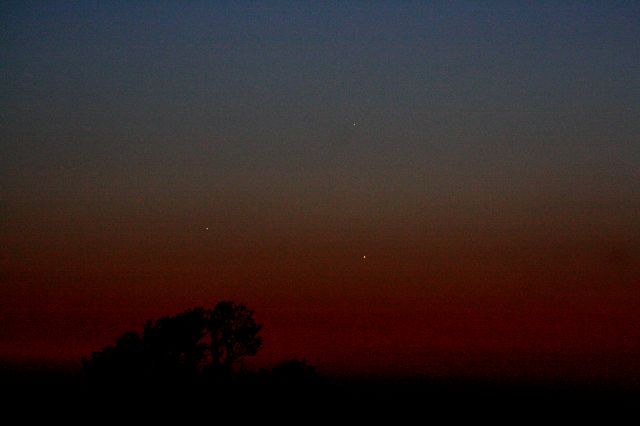
A triple conjunction of Mercury, Venus, and Jupiter occurred in May 2013. Move your mouse pointer over the image to see which is which. The picture was taken at 21:06 UT (an hour after sunset) on 26 May 2013 with a Cannon 1000D DSLR camera fitted with an 150mm lens, exposure 1/50" at f/5 and ISO 1600. The picture was enhanced by raising the contrast to 40, and brightness to 20 in PhotoImpact. After reduction to a suitable size, the contrast and brightness were increased again slightly to compensate for the loss on reduction.
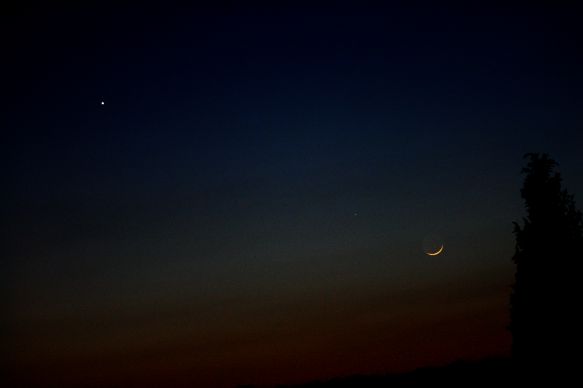
A conjunction of the Moon, Mercury, and Venus occurred on 15th April 2010. The picture was taken at 19:58 UT with a Cannon 1000D DSLR camera fitted with an 85mm SLR lens, exposure 1/5" at ISO 1600, gamma adjusted to 0.5, contrast to 40, and brightness to -20 in PhotoImpact.
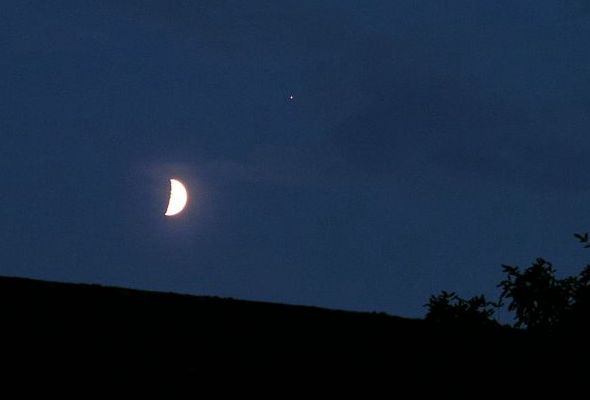
A conjunction of the Moon with Jupiter occurred on 13th July 2005. Unfortunately the closest approach occurred after moonset from my location.
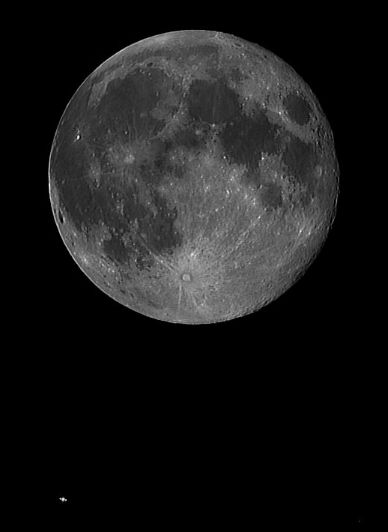
On 2nd February 2007 the full Moon passed close to Saturn. This picture was taken using a 270-mm SLR lens. Click on the picture to see three pictures (including this one at full size) taken the same night at different magnifications.
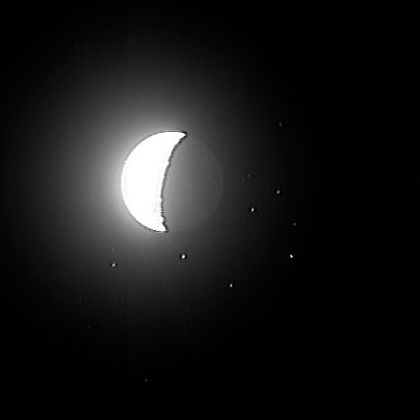
On 7th August 2007 the Moon passed through the Pleiades star cluster. It occulted (that is passed in front of) some of the stars, but this picture was taken a little later when the main stars of the cluster were all on view. Although the Moon was 36% illuminated (day 23.4 of the lunar month), the dark side can be seen illuminated by the light from the Earth (a phenomenon known as Earthshine).
This picture was taken with a 58-mm SLR lens.
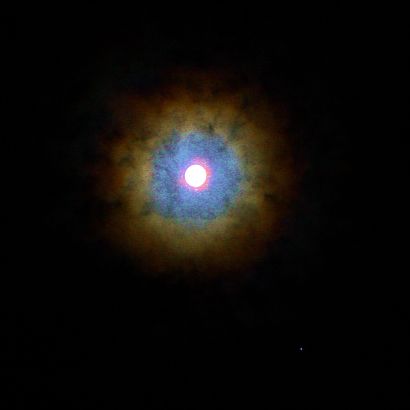
The full Moon on 10th November 2011 passed close to Jupiter. Plenty of cloud about but the Moon was producing a colourful halo and Jupiter was bright enough to show through. I can't decide which of two pictures I prefer. This is the native one; move your mouse pointer over the image to see one with a better-exposed image of the Moon superimposed. Pictures taken with my Canon 1000D with 70-300mm lens at 75mm, f/4, 1/40 sec at ISO 1600. Gamma, contrast, and saturation adjusted in PhotoImpact.
Home